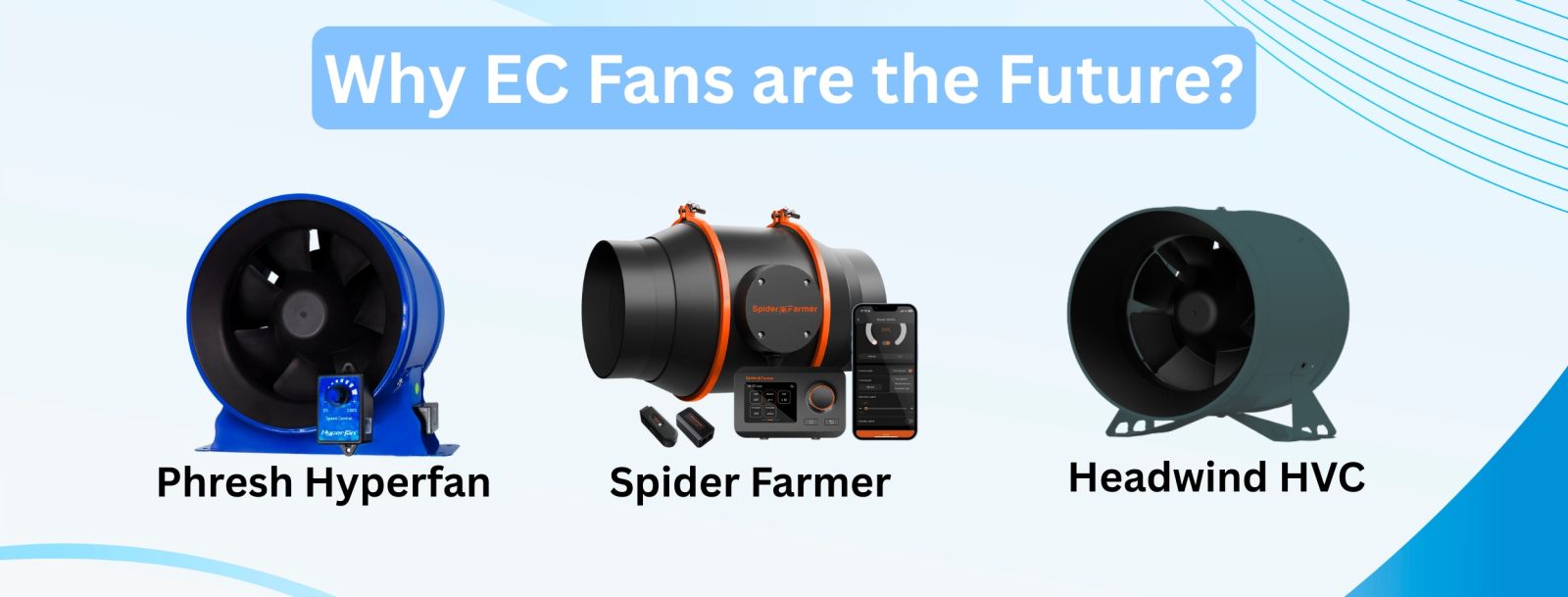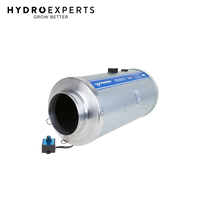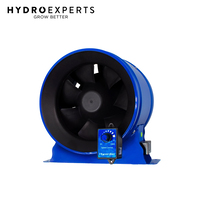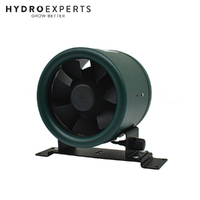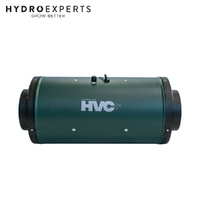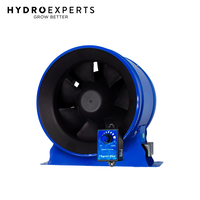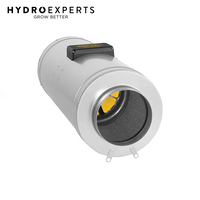Energy Efficiency in Ventilation: Why EC Fans are the Future
By Hydro Experts | 24 June 2025
Maintaining fresh air indoors, whether in your home or workplace, is crucial for both comfort and health. However, the traditional fan system of moving air around often wastes a lot of power.
This leads to higher expenses and negatively impacts our environment, especially since everyone is trying to save energy and be more eco-friendly. In this blog, we’ll show you why EC fans are the most efficient ventilation systems and energy-saving fans.
What Are EC Fans?
EC Fans, which stand for Electronically Commutated fans, are a type of energy-efficient fan used in different sectors serving various purposes. From better control to a higher energy efficiency level, EC fans offer numerous benefits that set them apart from traditional fan systems.
Moreover, as the name suggests, these fans are completely powered by Electronically Commutated motors, which are brushless DC motors that come with an integrated AC to DC converter. As a result, these fans have become the most preferred option in modern ventilation systems.
Why EC Fans Are More Energy Efficient
EC fans are more energy efficient mainly due to their advanced motor technology and integrated electronic control system. Unlike traditional AC fans, which operate at constant speed and consume more power regardless of demand, EC fans do things the right way.
It uses brushless DC motors with built-in electronics that precisely control fan speed based on your actual requirements. This variable speed operation ensures the fan only uses as much energy as needed, reducing unnecessary power consumption.
Furthermore, EC fans have higher motor efficiency (often above 90%) compared to standard AC motors, which typically operate at 60–70% efficiency. This is due to reduced friction, better power factor correction, and minimal energy loss during conversion.
Major Benefits of EC Fans
EC Fans, in comparison to traditional AC fans, offer many major benefits. From higher energy efficiency to more smart features, EC fans lead the way.
Here’s a more detailed explanation of the benefits of EC fans:
1. High Energy Efficiency
EC fans' energy efficiency is simply superior to traditional AC or DC motors, saving up to 70% energy. Moreover, with the usage of brushless DC technology integrated with smart electronics, EC motors optimize power usage solely depending on overall load requirements.
This efficiency in energy usage directly helps you to save significant costs over the motor's life span, making them an eco-friendly and economical choice. Furthermore, if you are a large-scale organization like data centers and commercial buildings, EC fans can offer you more value.
2. Variable Speed and Precise Control
EC motors offer highly precise and flexible speed control due to a built-in variable frequency drive (VFD) or integrated electronics. This feature allows them to adjust their speed, torque, and airflow continuously and automatically in response to changing system requirements. This level of control is often not possible with traditional AC motors without additional equipment.
The ability to precisely control speed makes EC motors incredibly versatile for various applications. They can maintain high efficiency across a wide range of speeds, from very low to above rated speeds, providing optimal performance and allowing for tailored solutions to meet specific needs.
3. Longer Lifespan and Low Maintenance
Due to their brushless design, EC motors experience less friction and wear than brushed motors, resulting in longer operational life. The lack of brushes also means fewer parts that can fail, reducing maintenance frequency and associated costs.
This reliability makes EC motors suitable for critical infrastructure applications where downtime must be minimised. Their durability also contributes to a lower total cost of ownership over time.
4. Reduced Noise and Vibration
Thanks to their advanced design and precise speed control functionality, EC motors operate significantly quieter than PSC (Permanent Split Capacitor) motors. The smooth and precise control of the motor's operation offers less vibration and lower noise levels, making it more comfortable.
This quiet operation can be quite beneficial in environments where noise is a concern, such as residential HVAC systems, commercial refrigeration units in retail spaces, and office environments. By reducing mechanical noise, EC motors enhance your comfort and can improve the quality of the surrounding space.
5. Compact Design and Space Savings
EC motors often come in a more compact design compared to traditional motors and fans. This is mainly due to the integration of control electronics directly into the motor housing. With this, it eliminates the need for external control devices like VFDs that take up additional space.
This compact size makes EC motors a preferred choice for applications with limited space. In some cases, one EC fan can also replace multiple types and sizes of traditional fans, simplifying system design and installation.
6. Integrated Electronics and Smart Features
With the advancement in technologies, nowadays most EC motors come with built-in control electronics, sensors, and connectivity options. These smart features allow for remote monitoring and integration into building management systems (BMS) or industrial automation networks.
This level of intelligence supports predictive maintenance, improves operational transparency, and enables seamless communication between different system components, promoting smarter energy use and greater system reliability.
7. Cost Savings
Another significant benefit of EC fans is their cost-saving ability. Compared to conventional AC fans and shade pole motors, they consume up to 70% less power. This not only reduces operational costs but also contributes to a more eco-friendly approach to cooling.
Many EC fans also incorporate a built-in power factor correction feature. This feature further reduces energy consumption, resulting in long-term cost savings for businesses and industries that rely on efficient cooling.
Applications of EC Fans in the Modern World
Many of us may still not be familiar, but EC fans are more commonly available around us. From the cooling system to air purification systems, EC fans are widely used in the modern world.
So, for more in-depth details, here is a detailed overview of the applications of EC fans in the modern world:
1. HVAC Systems
EC fans are widely used in heating, ventilation, and air conditioning (HVAC) systems due to their variable speed control and energy efficiency. They operate as a complete HVAC energy solution, optimizing airflow based on temperature and occupancy, reducing power consumption, and improving indoor air quality.
2. Refrigeration and Cooling Units
In commercial refrigeration, EC fans help maintain consistent cooling while minimising energy use. Their precise speed adjustment helps reduce compressor load, extend equipment life, and ensure temperature stability in supermarkets, cold rooms, and display cases.
3. Data Centres
Cooling is critical in data centers, and EC fans are perfect for maintaining optimal temperatures. Their quiet, reliable, and energy-efficient performance supports uninterrupted operation and helps reduce the overall energy consumption of data center facilities.
4. Industrial Ventilation
EC fans are increasingly deployed in various industrial settings for general ventilation, exhaust systems, and process cooling. They efficiently remove heat, fumes, dust, and other contaminants from factory floors, warehouses, and production areas.
5. Medical Equipment
EC fans are used in various medical devices such as ventilators, diagnostic machines, and patient monitoring systems. Their features are essential in healthcare environments where noise reduction and consistent performance can directly impact patient care and equipment accuracy.
6. Air Purification Systems
Air purifiers and filtration systems rely on EC fans due to their ability to maintain consistent airflow while adjusting to air quality levels. They help ensure effective removal of pollutants, allergens, and pathogens, all while consuming less power.
Comparing EC Fans with Traditional AC Fans
With all the benefits and use cases, EC fans are becoming the most loved fan system in the current world. When compared side by side with traditional AC fans, the reason becomes clearer:
| Feature | EC Fans | AC Fans |
|---|---|---|
| Efficiency | Over 90% | 60%-70% |
| Lifespan | Longer (Brushless Design) | Shorter (Brush Design) |
| Speed Control | Variable (Built-in electronics) | Fixed or needs external VFD |
| Heat Dissipation | Low | High |
| Noise Levels | Lower | Higher |
| Maintenance | Minimum | Frequent |
| Operating Cost | Low | High |
| Energy Savings | Up to 70% | Limited |
| Installation | Compact and easier | Often bulkier and less flexible |
How to Choose the Right EC Fan for Your Needs
When it comes to installing EC fans for your specific needs, you must always be cautious. The major factor for this is that not all EC fans are likely to meet your requirements.
Therefore, here are some proper ways to choose the right EC fans according to your needs:
1. Determine Airflow Requirements
Start by identifying the specific airflow (CFM – Cubic Feet per Minute) you need. Whether you're ventilating a small enclosure or a large room, the right fan must provide sufficient airflow to maintain the desired temperature or air quality levels. Always keep in mind that oversized or undersized fans can lead to inefficiencies and higher energy consumption.
2. Consider Pressure and System Resistance
For the second part, always understand the static pressure your system generates. In ducted systems or equipment with filters, the fan must overcome resistance to maintain consistent airflow. Therefore, always choose an EC fan that matches your system’s pressure profile to ensure optimal efficiency and avoid overloading the motor.
3. Evaluate Speed Control and Automation Needs
One of the biggest advantages of EC fans is their ability to vary speed. Consider whether your application needs smart control features like variable speed, remote monitoring, or integration with building management systems (BMS). Fans with built-in controllers or communication protocols offer greater flexibility and energy savings.
4. Check Size and Installation Constraints
Before choosing a fan, always make sure the physical dimensions of the fan suit your installation space. Compact EC fans are ideal for tight spaces. Also consider mounting options (e.g., axial, centrifugal, or plug fans) to match your system layout and ensure easy maintenance access.
5. Verify Efficiency, Noise Levels, and Certifications
Efficiency ratings, noise output, and relevant certifications (like CE, UL, or RoHS) are key to selecting a high-quality EC fan. Look for models with proven performance in noise-sensitive or energy-regulated environments. Choosing fans with third-party tested efficiency and safety standards ensures long-term reliability and compliance.
Conclusion
As the demand for sustainable, cost-effective, and intelligent ventilation solutions grows, EC fans have proven to be a crucial technology. With advantages ranging from up to 70% energy savings to reduced noise, longer lifespan, and smarter control options, they are a step ahead of traditional AC fans.
Whether you're upgrading an existing system or designing a new energy-efficient setup, EC fan can make a lasting difference, not just for your operations, but for the environment too. Therefore, investing in EC fans isn't just a technical upgrade; it’s beyond that. It's a smarter, greener move toward the future of ventilation.
Frequently Asked Questions (FAQs)
- Up to 70% energy savings compared to traditional AC fans
- Variable speed control with built-in electronics
- Lower noise and vibration
- Longer lifespan due to brushless design
- Compact size and easy integration
- Smart features for remote monitoring and automation




